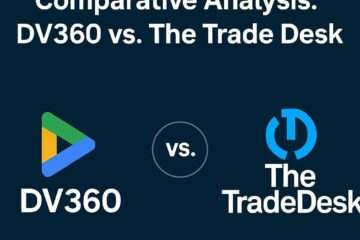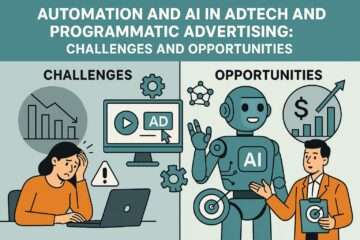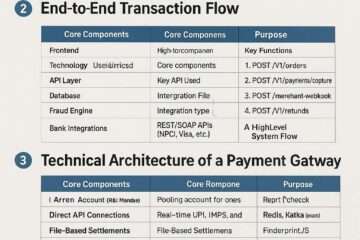

Google has once again extended the lifespan of third-party cookies. And the digital ad industry is unsurprised.
Given the ongoing challenges and divergent feedback, it was not surprising that companies testing Google’s cookie alternative, the Chrome Privacy Sandbox, were anticipating another delay. Google recently announced that the deprecation deadline has been shifted to an undisclosed date “early next year.”
There are numerous unanswered questions that have prevented the rollout from proceeding as scheduled.
According to Paul Bannister, the Chief Strategy Officer at Raptive, there are currently over 350 unresolved issues in the Privacy Sandbox GitHub repositories. These repositories serve as a platform for programmers to express their concerns.
In the meantime, the UK’s Competition and Markets Authority (CMA) has set a deadline of the end of June for ad tech vendors and publishers to provide feedback, as they oversee the rollout of the Sandbox. Google mentioned that the delay in receiving feedback was one of the reasons for missing its deadline. Up to this point, the CMA has gathered feedback from a minimum of 21 ad tech companies, publishers, and industry groups.
According to Bannister, Google has not made any changes in response to the issues highlighted by the CMA in its Q4 2023 oversight report. The Q1 2024 report released today by the CMA has once again highlighted a number of ongoing concerns.
Many of the comments raised concerns about the potential anticompetitive advantages that Google may have in Sandbox ad auctions. Concerns have been raised by industry experts and the CMA regarding the potential negative impact of the Sandbox on publisher CPMs and the level of control media owners will have over auction dynamics.
Issues with the timeline
It’s clear that Google’s decision to completely eliminate cookies by the end of this year left many testers puzzled. Tech vendors, in particular, can finally breathe a sigh of relief.
In the hypothetical scenario, the CMA would have evaluated Google’s deprecation plan and made a decision by the middle of the year. Google planned to remove cookies from Chrome right before the busiest part of the marketing calendar.
“Implementing such a significant change during the fourth quarter of an election year would not have been a wise decision,” remarked Bannister.
In January, Google introduced a test audience for the Privacy Sandbox, deprecating cookies for 1% of Chrome traffic.
According to Audigent Founder and CEO Drew Stein, the industry would have had a mere six months to work together with Google and the CMA in order to completely revamp two decades’ worth of ad tech progress and infrastructure.
According to GumGum CTO Ken Weiner, the 1% traffic test provided valuable insights into the mechanics of the Sandbox. However, it was not comprehensive enough to fully grasp its effects on market dynamics such as CPMs and fill rates.
In addition, there appeared to be a distinction between SSPs and DSPs regarding the minimum size of the test audience required to obtain genuine insights.
Andrew Casale, president and CEO of the Index Exchange, stated that the 1% pool was sufficient for SSPs due to their access to ad auctions. However, purchasers informed him that they required a cookieless audience of closer to 5% in order to evaluate the Sandbox’s effect on market dynamics.
Constraints on the CMA
Evidently, some participants in the ecosystem lacked the necessary time or resources to conduct sufficient testing of the Privacy Sandbox. This sentiment may potentially extend to the CMA as well.
According to the organization’s CEO, Konrad Feldman, even companies that have had direct communication with the CMA, such as Quantcast, encountered difficulties in obtaining clarity regarding the CMA’s standards for halting the Sandbox implementation or its anticipations regarding the progression of Chrome’s cookie deprecation from 1% to 100%.
While the CMA’s oversight may not have been entirely transparent, it has demonstrated a willingness to not only solicit feedback but also assist with testing. For instance, Casale stated that the A/B testing framework provided by the CMA appeared to be extremely well-considered.
However, the most burdensome task for the CMA is to assess the Sandbox’s hidden effects on competition in ad auctions and the subsequent consequences for publishers.
For instance, the Topics API provided a data advantage to large, multitopic sites, such as Google’s YouTube, according to Bannister of Raptive.
Furthermore, several sources have claimed to have conveyed concerns to the CMA regarding the status of Google Ad Manager (GAM) as the highest-ranking vendor in Privacy Sandbox auctions. Critics assert that Google might be able to outbid the bid prices of other SSPs due to the fact that GAM’s status permits it to conduct its own auction – with its own demand sources – after other SSPs have completed theirs.
Latency and competition from the cloud
Ad rendering latency issues that have become well-documented in the Privacy Sandbox will also negatively impact publisher revenue.
Recent testing data from Raptive indicates that The Sandbox impacts each ad impression by an additional few seconds of render time. If this latency results in an ad auction terminating prior to serving an impression, the publisher is not compensated.
Initial evaluations suggest that the cost per thousand (CPM) for Sandbox auctions was 30% less than the CPM for impressions containing a third-party cookie. One factor contributing to this deficiency is latency.
The Privacy Sandbox is largely responsible for this latency by relocating the ad auction to the client side. It occurs within the Chrome web browser, which restricts the storage of any data associated with ad serving to a user’s device. Stein of Audigent stated that the issue is that individual devices lack the processing capacity of thousands of computers hosted on a cloud service such as Amazon Web Services (AWS).
Publishers may opt to operate the auction server side in the cloud via a trusted execution environment (TEE), as opposed to utilizing the browser. By doing so, the available processing capacity for the auction would be increased, leading to a reduction in latency.
Although the Privacy Sandbox permits the execution of certain auction mechanics on the server side within a TEE, Google only permits TEEs that operate on AWS or Google Cloud Platform at this time, according to Casale of Index.
This is a matter of competition for businesses such as Index, which provides publishers with its proprietary cloud-based TEE.
From the publisher’s vantage point, Bannister reiterated this concern, proposing that Google permit TEEs from Microsoft Azure, Magnite, Cloudflare, and others. Nevertheless, whether Google will eliminate the TEE restriction is unknown.
Moving ahead
Nevertheless, the criteria by which concerns will satisfy the CMA’s anticompetitive concerns or publisher impacts remain unknown to those evaluating the Sandbox.
Feldman of Quantcast predicted, “If the open internet becomes marginally less favorable for advertisers, funds will flow to non-open internet sources such as Google.” “However, assuming competition will be affected, what level of impact is excessive?” Simply put, it’s unclear.”
Despite the regulatory authority held by the CMA, the industry predominantly consults Google for solutions. This is due to the fact that each alternative web browser merely eliminated cookies without developing an alternative signal. Marketers therefore have a significant stake in collaborating with Google to ensure the successful implementation of the Sandbox, given that Chrome is the sole prominent web browser endeavoring to introduce an alternative to cookies.
However, according to Stein of Audigent, the solution can only benefit all parties involved if Google abandons the notion that advertising is a zero-sum game and reestablishes the collaborative relationship with the ad tech sector that initially propelled it to its dominant position.
A source familiar with testing who requested anonymity stated that the incomplete nature of the Privacy Sandbox implementation demonstrates how far Google has fallen in terms of prioritizing its ad tech platform and collaborating with the industry.
“Frankly, if you examine their ad stack, it feels like they’ve almost neglected it,” they said, adding that Google has made few significant enhancements to its SSP and DSP recently. The fact that this is [Google’s] first significant change in quite some time contributes to their current state of stagnation.
Despite repeated delays, some respondents believe Google has been receptive to feedback and is treating its responsibility seriously.
Mark McEachran, SVP of Product Management at Yieldmo, remarked, “Although it’s frustrating to concentrate resources on a moving target, it’s encouraging to see Google admit it hasn’t adequately addressed the requirements of the contemporary advertising ecosystem.”
Nevertheless, irrespective of the ultimate outcome of the Sandbox, the industry should not become complacent about its cookie-filled successes.
“This delay does not mean advertisers can continue to affix user IDs to individuals indefinitely,” said Ian Trider, vice president of DSP products at Basis Technologies. “Many individuals may be hoping that the CMA will compel Google to permit third-party cookies to persist indefinitely.” “That is exceedingly unlikely to occur.”




























































